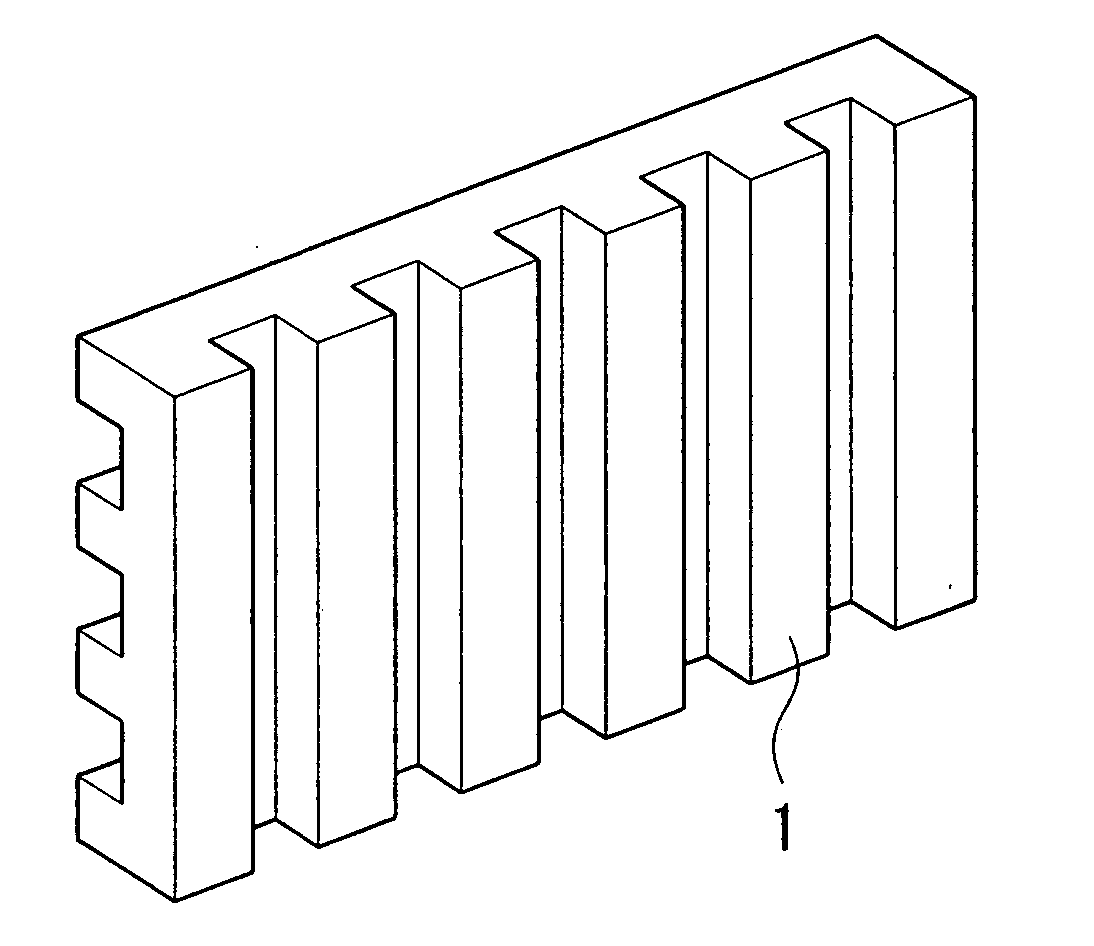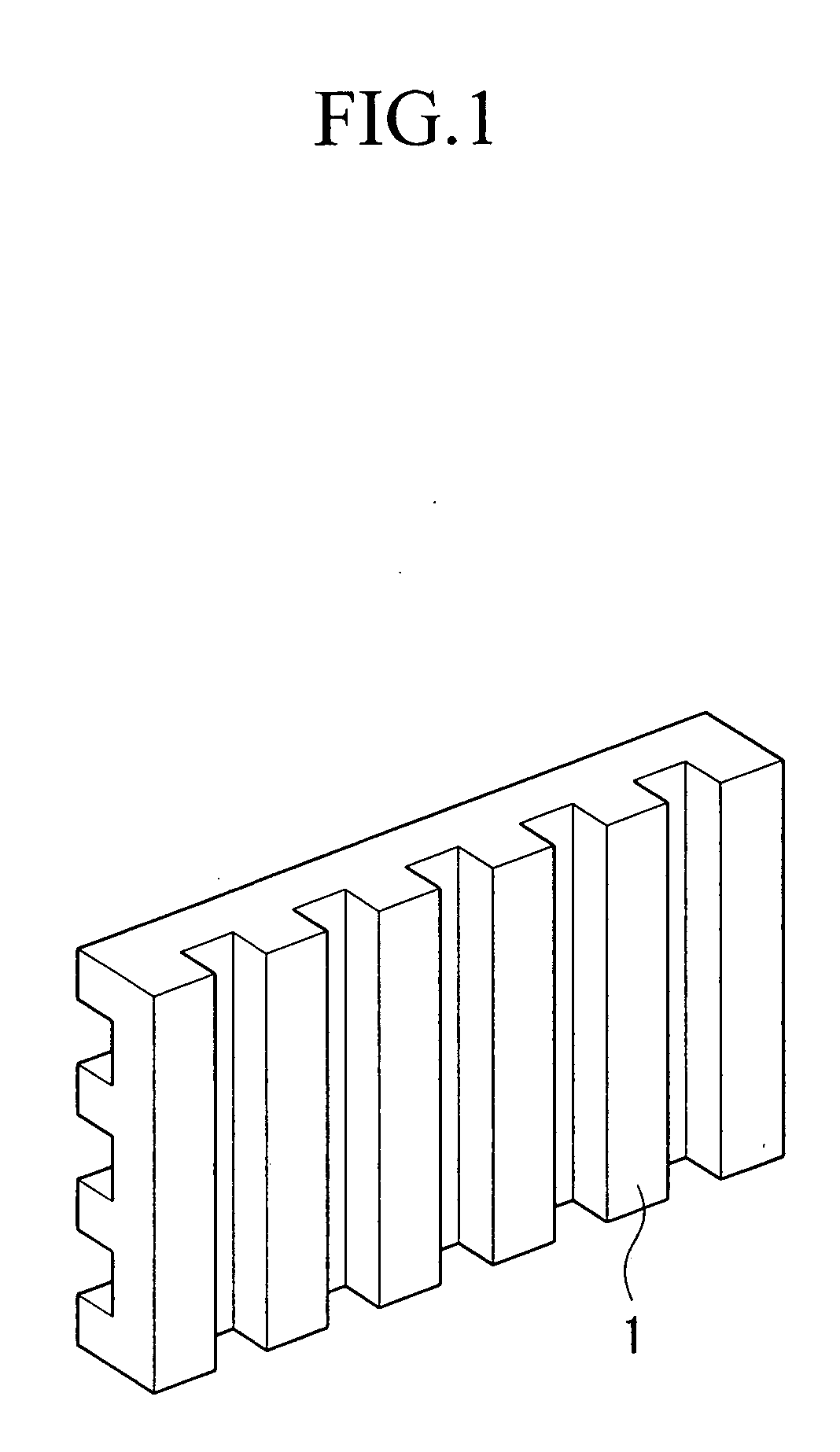Electrically conducting resin composition for fuel cell separator and fuel cell separator
a technology of electric conducting resin and fuel cell separator, which is applied in the direction of cell components, conductors, non-metal conductors, etc., can solve the problems of difficult to obtain sufficient mechanical characteristics for a fuel cell separator, and the mechanical properties of the electrically conducting resin composition containing the resin with low molecular weight are generally poor, and achieve excellent electrical conductivity, flexural strength, and flexural strain.
- Summary
- Abstract
- Description
- Claims
- Application Information
AI Technical Summary
Benefits of technology
Problems solved by technology
Method used
Image
Examples
examples
[0088] Examples of the present invention will hereinafter be described in further detail, but it is not restricted thereto.
[0089] The materials used in the examples will be described hereinafter.
(Resin Component)
[0090] Resins 1 to 10, shown in Table 1, containing the components A and B were prepared as the resin component.
[0091] As the polypropylene resin of the component A, there were used SunAllomer PX900N (MFR=30), PX600N (MFR=7), PX400A (MFR=2), PW201N (MFR=0.4) manufactured by SunAllomer, Ltd.
[0092] The value of MFR is measured by the method in conformity with JIS K7210, specifically at a test temperature of 230° C. and a test load of 21.18 N (2.16 kg).
[0093] As the elastomer of the component C, there were used hydrogenated styrene-butadiene rubber (H-SBR) of Dynalon 1320P manufactured by JSR Corp. and styrene-ethylene / butylene-styrene block copolymer (SEBS) of Kraton G1652 manufactured by Kraton Polymers Japan, Ltd.
TABLE 1(% by mass)ComponentResin 1Resin 2Resin 3Resin...
examples 1 to 9
, Comparative Examples 1 to 3
[0100] The primary materials according to the resin component and the component B shown in Table 1 were placed in a Laboplastmill (trademark) (model 50C150 manufactured by Toyo Seiki Seisaku-Sho, Ltd.) and kneaded at a temperature of 200° C. and a rotation rate of 45 rpm for 7 minutes to obtain an electrically conducting resin composition. This composition was placed in a mold capable of molding a flat plate of 100 mm×100 mm (the thickness varies for each physical property test item), and then pressurized and heated using a 50 t compression molding machine (E-3013 manufactured by Nippon Engineering Co., Ltd.) at a temperature of 230° C. and a pressure of 15 MPa for 3 minutes after 3-minute preheating. Subsequently, the mold was cooled using a cooling press at a temperature of 25° C. and a pressure of 15 MPa for 2 minutes to obtain molded bodies of examples 1 to 9 and comparative examples 1 to 3. The composition of each molded body is shown in Tables 2 an...
example 10
[0107] The aforementioned composition of the example 6 was placed in a mold capable of molding a flat plate of 100 mm×200 mm×1.5 mm in size with six through holes and a groove of 1 mm in width pitch and 0.5 mm in depth formed on either side thereof, and then pressurized and heated using the 50 t compression molding machine at a temperature of 230° C. and a pressure of 15 MPa for 3 minutes after 3-minute preheating. Subsequently, the mold was cooled using a cooling press at a temperature of 25° C. and a pressure of 15 MPa for 2 minutes to obtain a fuel cell separator. This fuel cell separator had a volume resistivity of 6.5 mΩ·cm and a thickness in the middle of 1.51 mm, and was very favorable.
PUM
| Property | Measurement | Unit |
|---|---|---|
| apparent viscosity | aaaaa | aaaaa |
| apparent viscosity | aaaaa | aaaaa |
| volume resistivity | aaaaa | aaaaa |
Abstract
Description
Claims
Application Information
 Login to View More
Login to View More - R&D
- Intellectual Property
- Life Sciences
- Materials
- Tech Scout
- Unparalleled Data Quality
- Higher Quality Content
- 60% Fewer Hallucinations
Browse by: Latest US Patents, China's latest patents, Technical Efficacy Thesaurus, Application Domain, Technology Topic, Popular Technical Reports.
© 2025 PatSnap. All rights reserved.Legal|Privacy policy|Modern Slavery Act Transparency Statement|Sitemap|About US| Contact US: help@patsnap.com


